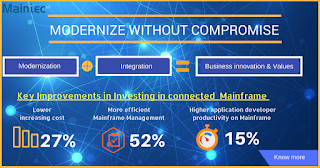Everything you need to know about Mainframe Migration

Mainframe migrations are always successful when you do it right. More than a decade of large scale enterprise mainframe migrations have led to best practices and strategies that establish robust distributed solutions, always outperforming their previous mainframe environments, and with more ongoing modernization flexibility and scalability. So what do you need for a successful migration? Selection of the right solution and solution provider is just the beginning. Experience gained through dozens of large migration projects suggests these 10 primary best practices. 1. Ensure that all 10 components common to all migrations are designed for and assigned clear ownership Establish ownership for delivery of each of the 10 components and obtain firm delivery schedule commitments. The 10 components are: · Primary programming languages (like COBOL, PL/I and Natural) · Secondary programming languages (like Easytrieve and Assembler) · Data infrastru




